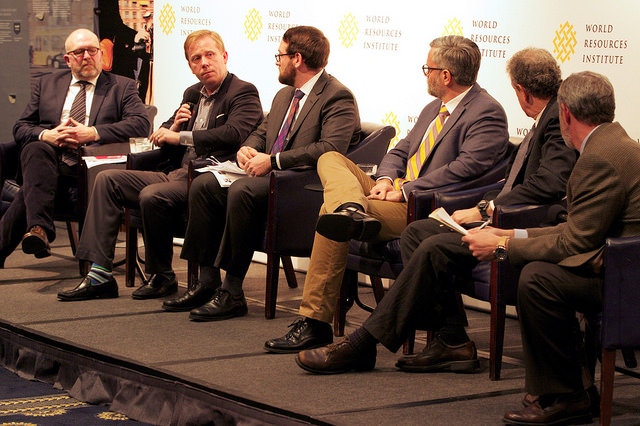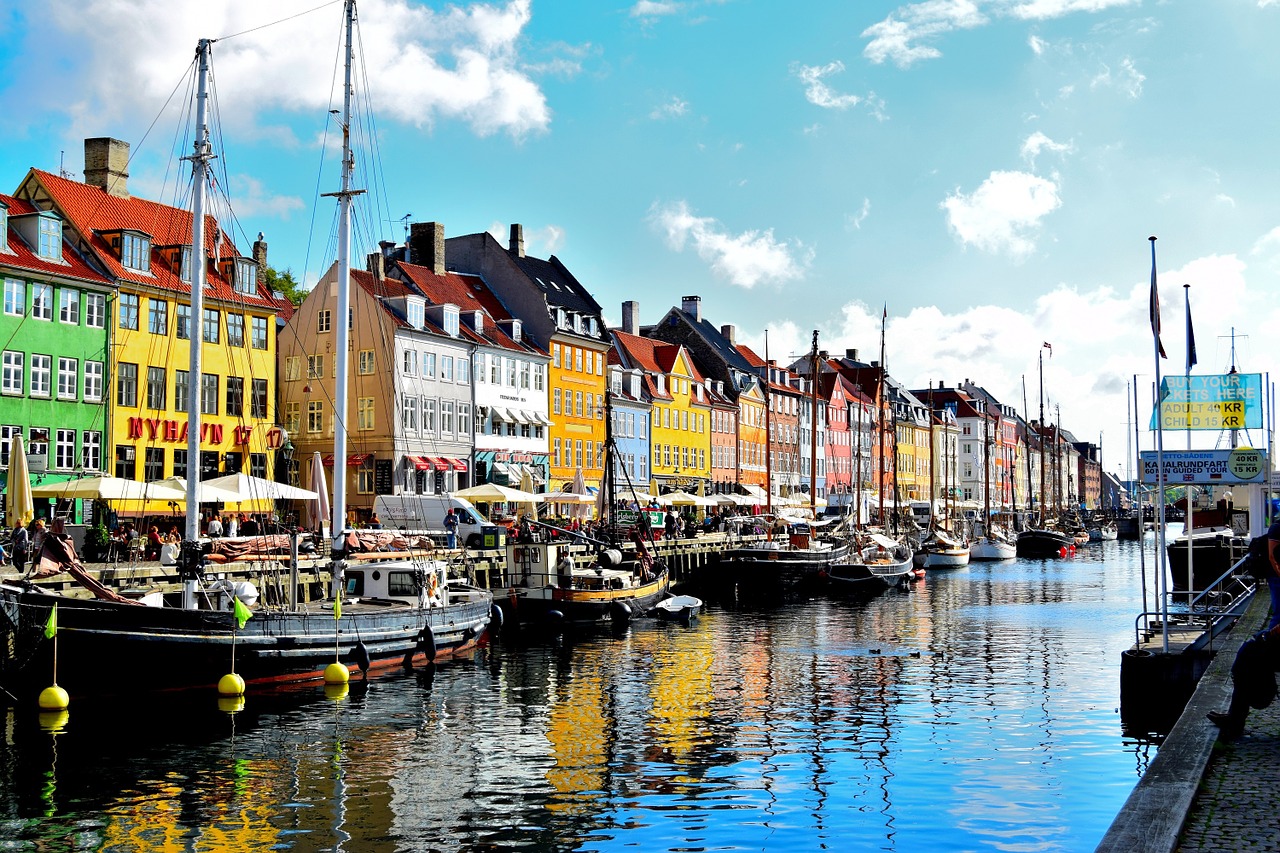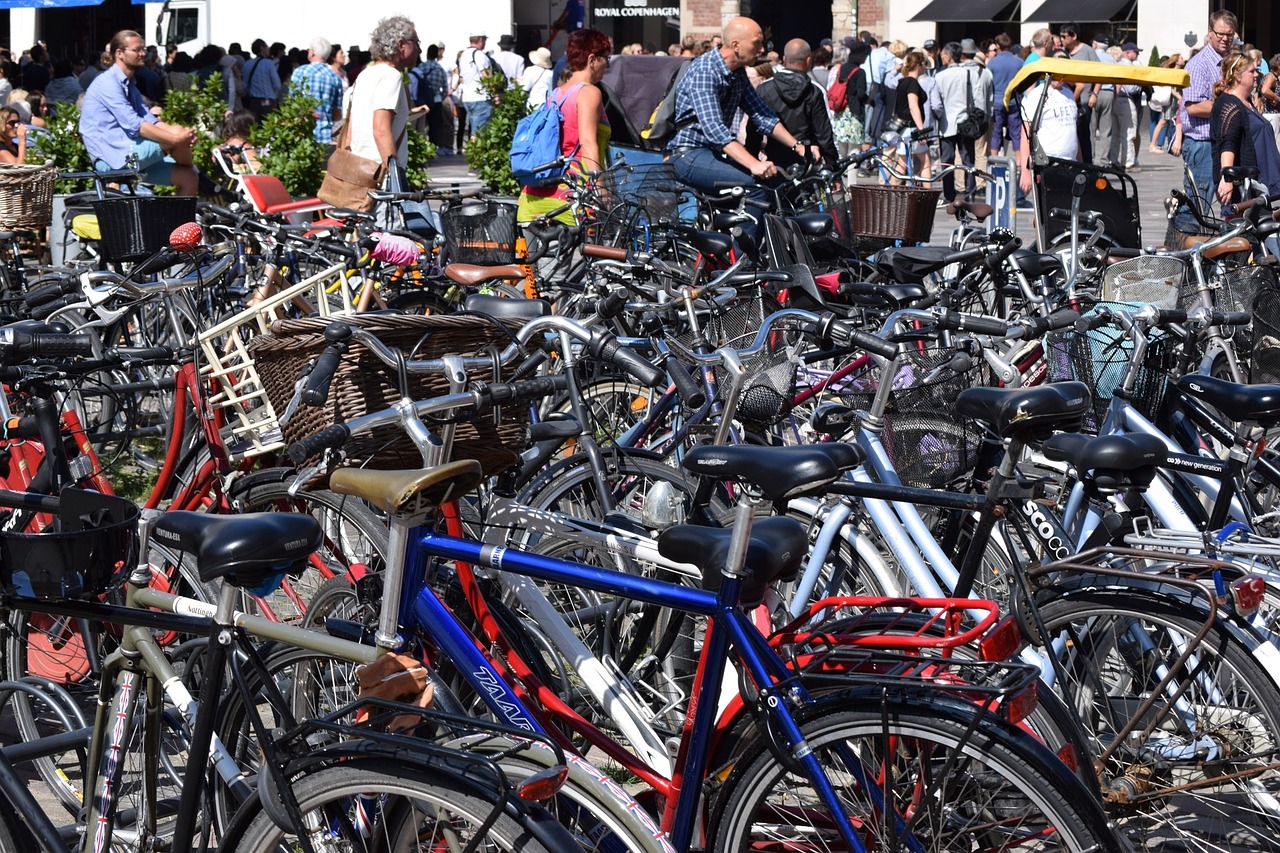
(Photo Credit: World Resources Institute)
January 18, 2017
While last week’s TRB Annual Meeting was very much focused on the potential impact of connected and autonomous vehicles, the World Resources Institute hosted an event on something less high-tech: bicycles. More specifically, the discussion focused on cycling infrastructure in Copenhagen as a catalyst for talking about redesigning American cities. However, applying Denmark’s lessons learned to the United States requires understanding our very different governance structures and reflecting on the changing role of our federal government.
It’s no secret that Copenhagen, the capital of Denmark, is well-known for its extensive cycling network and relatively high cycle mode share: a 2014 report by the Copenhagen Municipality found that 45 percent of residents biked to work or school. And it’s not only within the city; extensive cycling networks also connect the suburbs. But the reasons for cycling as an everyday mode of transportation are not only infrastructural, but also behavioral. In addition to separated bike lanes on nearly every street, Danish children are taught how to bike at an early age and are expected by age 5 to be able to bike on the street with an adult. In addition, the 2014 study found that Danes cycle mostly because it is the fastest, cheapest, and most convenient way to travel.
Local and national policies continue to reinforce cycling as a primary mode of travel through cities. The Danish government has developed a national strategic plan focused on cycling and ensuring the dialogue continues to prioritize it, and Copenhagen continues to enhance its cycle network, such as this cycle bridge that opened last year.
Hearing about Copenhagen’s 45 percent mode share far exceeds the highest in the United States (7 percent in Portland, Oregon), but any discussion around Danish cycling highlights the importance of federal and local government support in Denmark. This forms the crux of the conversation around bike infrastructure in the United States, one that veers into the political or the satirical (or both).
A significant government presence in regular Danish life (think: the Nordic state welfare model) means that decision-making by the national government is widely accepted, while the United States has a decentralized structure that delegates much of these powers to the states (and from there, even some cities and counties). This lends to diverging views and approaches to policy implementation across the country.
One exception is where federal funding is involved and it comes down to what modes are incentivized: highways continue to receive the largest sums compared to transit and bicycle/pedestrian infrastructure, although federal funding as a whole is declining. While the topic du jour is technology, the last major modal push on a national scale was the Interstate Highway System. Whereas the car was initially met with caution and criticism on city streets in the 1920s, the passing of the Highway Bill in 1958 came with hefty federal funding and local politicians representing urban centers were eager for a piece of the funding pie. The undertaking resulted in highway roads carving through rural areas and city centers alike throughout the United States, which made driving faster and more convenient compared to other modes – very similar to the reasons that Danes cycle now.
The current dialogue around transportation is changing rapidly and the role of technology remains hopeful, speculative, and uncertain. In addition, a changing federal role and a new incoming presidential administration further adds to the uncertainty. Combined with last November’s local transportation ballot measures that brought a surge of long-term funding for local transportation needs, local governments are looking inward and less towards the federal purse strings. While some admirers of the Danish cycling network wish for a national policy supporting more bike infrastructure, the reality for the US is that the action will be happening at the local level.
Either way, Copenhagen’s parking lots will probably look much different from ours for years to come.







